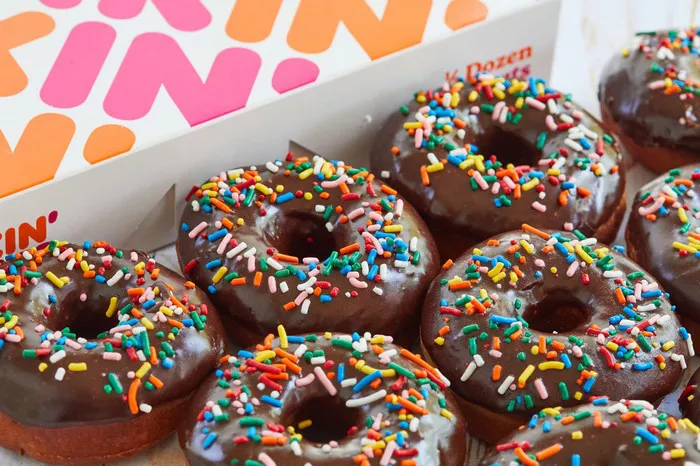In the realm of quick-service eateries, Dunkin’ has carved out a niche for itself with its wide array of coffee beverages and delectable donuts. For many customers, a trip to Dunkin’ isn’t just about getting a caffeine fix—it’s also an opportunity to indulge in a box of freshly made donuts. However, the price of these sweet treats can vary depending on several factors, including location, assortment, and promotions. In this article, we delve into the specifics of how much a box of donuts typically costs at Dunkin’, exploring the underlying reasons for these pricing strategies and what influences them.
Introduction to Dunkin’: A Brief Overview
Before delving into the specifics of pricing, it’s essential to understand the company behind the donuts. Dunkin’, formerly known as Dunkin’ Donuts, is an American multinational chain of coffeehouses and donut shops. Founded in 1950 by William Rosenberg in Quincy, Massachusetts, Dunkin’ has grown to become one of the largest coffee and baked goods chains in the world. Known for its quick service and affordable menu offerings, Dunkin’ has expanded its menu beyond its namesake donuts to include a variety of breakfast sandwiches, bagels, and beverages.
Types of Donuts Offered at Dunkin’
Dunkin’ is renowned for its extensive selection of donuts, which cater to a wide range of tastes and preferences. From classic flavors like glazed and chocolate frosted to more adventurous options such as Boston Kreme and jelly-filled, Dunkin’ strives to offer something for everyone. The availability of specific flavors may vary by location and time of day, as Dunkin’ prides itself on serving freshly made donuts throughout the day.
Understanding Pricing Variability
One of the most frequently asked questions by Dunkin’ customers is, “How much does a box of donuts cost?” The answer to this question is not as straightforward as it may seem, as several factors contribute to the variability in pricing.
1. Regional Pricing Differences
One of the primary factors influencing the cost of a box of donuts at Dunkin’ is regional pricing differences. Dunkin’ operates thousands of locations across the United States, and pricing can vary significantly from one region to another. Factors such as local cost of living, competition from other quick-service restaurants, and regional economic conditions can all impact how Dunkin’ sets its prices. For example, customers in urban areas with a higher cost of living may expect to pay more for a box of donuts compared to those in rural or suburban areas.
2. Assortment and Size Options
Another factor that affects the price of a box of donuts at Dunkin’ is the assortment and size of the box. Dunkin’ typically offers boxes of donuts in various sizes, ranging from small boxes that contain a half-dozen donuts to larger boxes that can accommodate a dozen or more. The price of the box will vary depending on the number of donuts it contains and the specific assortment chosen. For instance, a box of a dozen assorted donuts may cost more than a box of six donuts of the customer’s choosing.
3. Seasonal and Promotional Pricing
Dunkin’ frequently introduces seasonal and promotional donut flavors and pricing. Seasonal offerings such as pumpkin spice donuts in the fall or peppermint mocha donuts during the winter holidays may be priced differently than their year-round counterparts. Additionally, Dunkin’ often runs promotions and discounts on its donuts to attract customers and drive sales. These promotions can vary by location and may include discounts on bulk purchases or special pricing on specific days of the week.
4. Economy of Scale
The concept of economy of scale also plays a role in Dunkin’s pricing strategy for its donuts. As a large chain with significant purchasing power and production capabilities, Dunkin’ can leverage economies of scale to keep its costs down and pass on savings to customers. This allows Dunkin’ to offer competitive prices on its donuts while maintaining profitability and quality.
SEE ALSO: Dunkin’ Donuts Franchise Costs & Profitability: A Full Guide
Customer Expectations and Value Perception
Beyond the logistical and economic factors that influence pricing, customer expectations and value perception also play a crucial role in determining how much Dunkin’ charges for its donuts. Dunkin’ customers may have different perceptions of value based on factors such as taste, quality, convenience, and brand reputation. Some customers may be willing to pay a premium for Dunkin’s donuts because they perceive them to be of higher quality or because they appreciate the convenience of being able to purchase them alongside their morning coffee.
Conclusion
In conclusion, the cost of a box of donuts at Dunkin’ can vary based on a variety of factors, including regional pricing differences, assortment and size options, seasonal and promotional pricing, and the concept of economy of scale. While theexact price of a box of donuts may fluctuate depending on these factors, Dunkin’ strives to offer its customers a wide selection of freshly made donuts at competitive prices. By understanding the factors that influence pricing, customers can make informed decisions about their purchases and continue to enjoy the sweet indulgence that Dunkin’ donuts have to offer.
As Dunkin’ continues to evolve and expand its menu offerings, it will be interesting to see how pricing strategies adapt to meet the changing demands of customers and the competitive landscape of the quick-service restaurant industry. Ultimately, the cost of a box of donuts at Dunkin’ reflects not only the company’s commitment to quality and convenience but also its ability to adapt to the ever-changing preferences of its loyal customer base.

